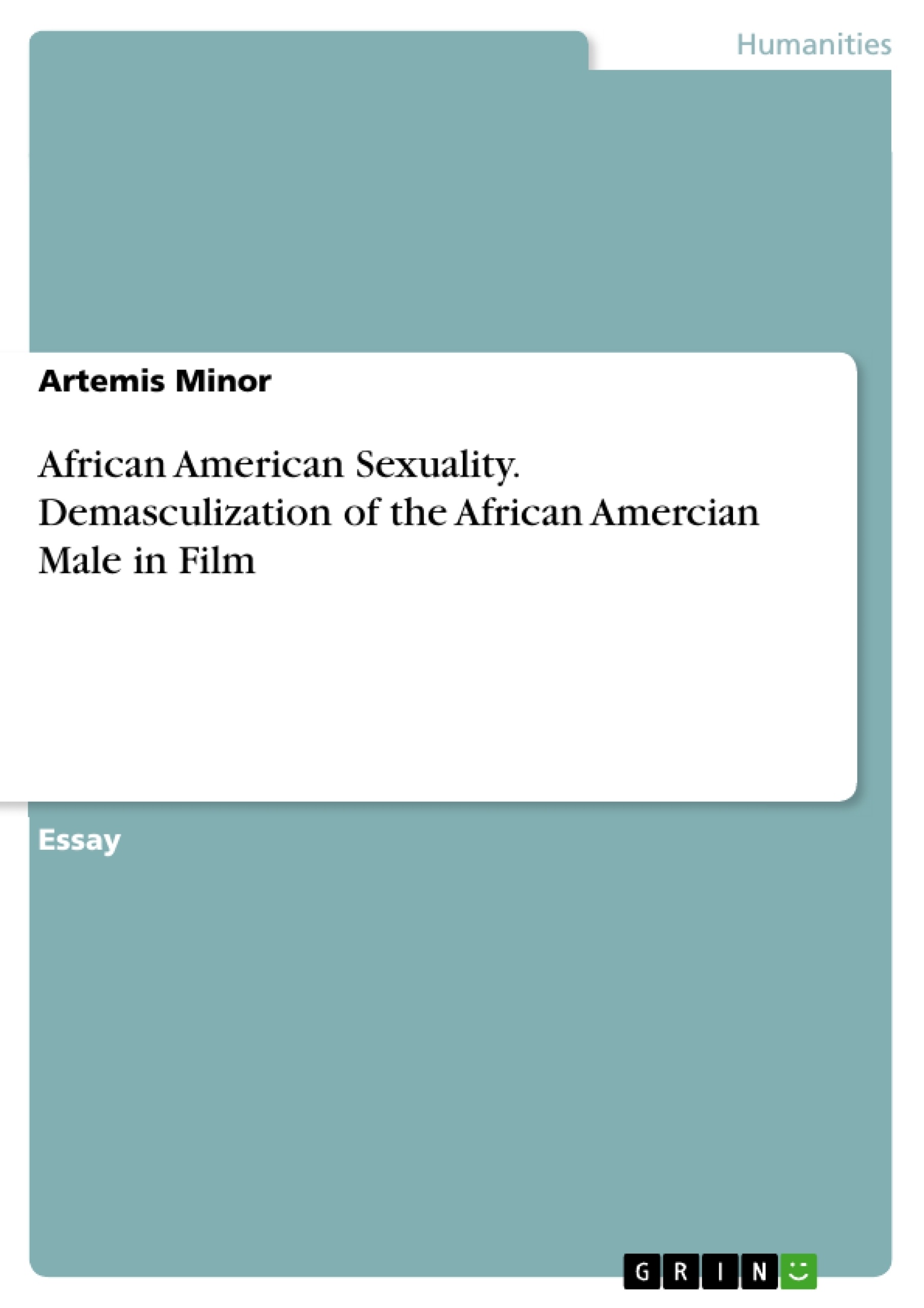Historically masculine black sexually has been associated with aggression and dominance as well as being synonymous with having a large sexual organ. Currently in the mainstream hip-hop genre this focal point is prevalent and continuously perpetuated in the everyday lyrics of its artists.
As author Ronald L. Jackson II explores in Scripting the Black Masculine Body: Identity, Discourse, and Racial Politics in Popular Media the embracing of what he calls "the hypertext of sexuality(Jackson p.104)" drives the music and media streams of black culture. Although glamorized, the idea of all black men being well-endowed has many negative undertones such as being lustful predators and intellectually inferior.
Inhaltsverzeichnis (Table of Contents)
- Black Male Actors Dressing as Women is a Hollywood Norm
- The Mammy
- The Infamous Black Buck Transformation
- Madea
- Demasculinization of Black Sexuality
Zielsetzung und Themenschwerpunkte (Objectives and Key Themes)
This paper explores the portrayal of black men dressed as women in mainstream American cinema and television, arguing that this representation is a form of minstrel show that perpetuates negative stereotypes of black sexuality. The author draws upon the work of Ronald L. Jackson II to contextualize this phenomenon within a broader discussion of the "hypertext of sexuality" and the scripting of black masculinity in popular media.
- The perpetuation of negative stereotypes of black masculinity and sexuality in media
- The role of black actors and filmmakers in perpetuating these stereotypes
- The historical and contemporary significance of the Mammy character
- The impact of Tyler Perry's Madea character on representations of black women
- The relationship between black sexuality and the demasculinization of black men in media
Zusammenfassung der Kapitel (Chapter Summaries)
- The paper begins by discussing the historical association of black male sexuality with aggression and dominance, and how this stereotype is perpetuated in hip-hop culture. The author then introduces the concept of the "hypertext of sexuality" and its influence on black media, citing Ronald L. Jackson II's work on the scripting of black masculinity.
- The second chapter explores the history and evolution of the Mammy character in American media, highlighting its association with domestic servitude, asexuality, and negative stereotypes of black women. The author discusses the portrayal of Mammy characters by black men in films and television shows, noting the prevalence of this trope.
- The third chapter examines the phenomenon of black men dressing as women in film and television, tracing its origins back to Flip Wilson's Geraldine Jones character. The author highlights the success of black actors who have portrayed women on screen, suggesting a correlation between this type of performance and career advancement.
- The fourth chapter focuses on Tyler Perry's Madea character, analyzing its portrayal of black women and its implications for black sexuality. The author argues that Madea perpetuates negative stereotypes of black women, including aggression, criminality, and lack of intellect, and that her character represents a form of reverse minstrel show.
Schlüsselwörter (Keywords)
Black sexuality, black masculinity, media representation, Mammy, Madea, minstrel show, stereotypes, hypertext of sexuality, scripting, black culture, Ronald L. Jackson II, Tyler Perry, Spike Lee.
- Citar trabajo
- Artemis Minor (Autor), 2015, African American Sexuality. Demasculization of the African Amercian Male in Film, Múnich, GRIN Verlag, https://www.grin.com/document/310446




